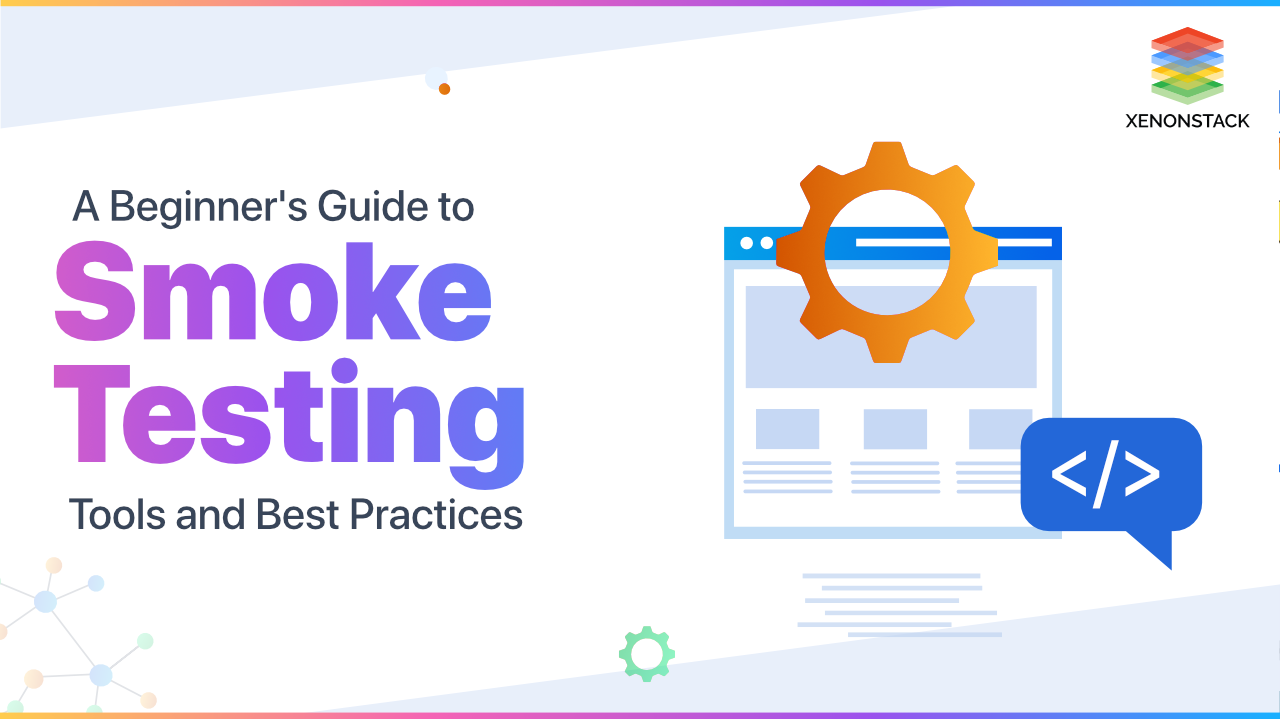
What is Smoke Testing?
Smoke testing is a process to check that deployed build is stable or not. It helps a QA team to get confirmation QA team can proceed for further testing or not. It also gives ensures that build received from development is working correctly. Referred to as s "Day0" check. It is a type of testing conducted at a building level.The quality assurance and software testing process of software development is as necessary as the actual code had written. Click to explore about, Software Testing Best Practices
How does Smoke Testing work?
- In the first release, Development team releases a build for testing.
- Then testing team tests a build.
- Test carried out on a build, then after that build accepted or rejected.
- If the testing team accepts the build then after that Functional Testing carried out.
Why Smoke Testing Matters?
- Smoke testing is an integral part of the software development life cycle as it gives surety that the correctness of the system in the initial stage.
- It helps to save a lot of time.
- If a QA team approves an initial build then only in that case further steps of testing followed.
- Smoke testing brings a system in a better state, once a Smoke Testing completed then after that Functional Testing conducted.
- It removes a lot of bugs at an initial stage.
- Smoke testing finds defects to an application's functionality introduced due to new changes to code or by adding new functionality with which previous functionality effected.
An important process that ensures customer satisfaction in the application. Click to explore about, Artificial Intelligence in Software Testing
What are the benefits of Smoke Testing?
The benefits of Smoke Testing are listed below:
- Defects identified at early stages.
- It improves the quality of a system.
- It reduces risks.
- Progress is easier to access.
- It saves a test effort as well as time.
- Detecting critical errors and correction of errors is effortless.
- It runs very quickly.
- It minimizes integration risks.
- Finds issues introduced in the integration of modules.
- Reduced Manual Intervention.
- More Coverage.
- It validates the functionality of the product.
How to adopt Smoke Testing?
Deploy the build in QA. QA team tests the application against critical functionalists such as proper functioning of login, like user able to make login using a UI of a login page and backend should also be working correctly. Then a series of test cases designed to expose errors after the release of a build. If test cases passed, then QA team continues with Functional Testing. Any failure indicates, need to handle a system check to the development team. Whenever there is a need to change in a build, then Smoke Testing executed to get stability for a build.A methodology that allows continuous iteration of development and testing all through the software development life cycle. Click to explore about, Role of Automated Testing in Agile Enterprise
What are the best Smoke Testing Tools?
Many tools are available to do this Testing. These are the following tools to do testing in an automated way -Concluding Smoke Testing
In conclusion, it is the type of testing executed on every build without fail as it helps to find out defects in the early stages. This activity is the final step before a software build enters into a system stage. Mainly, applied to each build and only applied to new development as well as to the major and minor release of the system. It minimizes a test effort and improves the quality of an application. It's conducted manually or by automation depending on the client and the organization.
Our solutions cater to diverse industries with a focus on serving ever-changing marketing needs. Click here to explore our DevOps Consulting Services
What's Next?
As teams uplift to enhance the throughput and speed of application changes, testing is often the critical bottleneck. It’s vital for teams to adopt true database automation and to treat database code just like application code in order to drop the database bottleneck. To stimulate connected improvement in your testing strategy as you evolve it for each technology and business initiative, we recommend taking the following steps:- Click to read about Shift Left Testing Benefits
- Explore more about Sanity Testing Techniques and Tools
.webp?width=1921&height=622&name=usecase-banner%20(1).webp)


